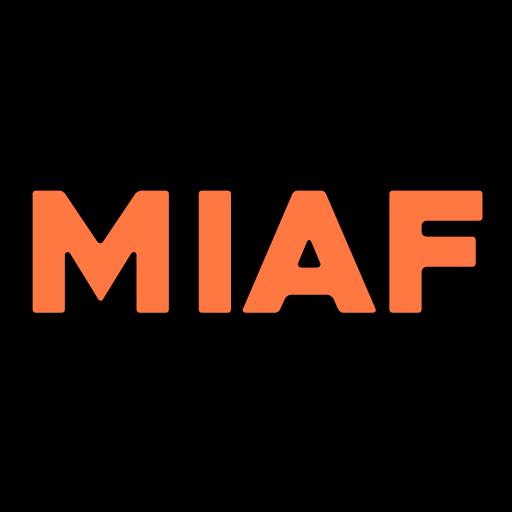International Competition Programme 7: Into the Dark screens at Barbican book tickets
Welcome to our annual ghoul-walk of fetid horrors and surging psyche damage. In many ways, this kind of stuff is one of the things that animation does best.
The wider perception of cinematic animation is that it is more or less a computer driven medium used for making family blockbuster fodder. Even those a bit more cluey than the multiplex popcorn brigade might be surprised at just how small a percentage of animation is actually made for kids. This year to put together the Competition programmes we had to sift through more nearly 3,000 films. Of that, about 200 were kids/family films. Yep, 15%. And yet the ‘family film’ perception persists.
As well as the substantial community of abstract and experimental animators, generally speaking, animation is an artform that attracts people who overwhelmingly tend to work in either surrealist/absurdist or grim/black/bleak narrative forms. That is actually what animation does best and in so many ways is best suited for.

With all of that in mind, there seemed little point in holding back so we open with The Absence Of Eddy Table by Rune Spaans. This weird theatre of murderous cruelty is a superbly crafted digital upgrade of the body snatchers fear. The detail and design of the forest environment it is set in is just a delight to try and take in but, alas, for our naïve hero it is a living, breathing atmosphere of twisted terrors and screaming existential threats on steroids. Shape shifting, ‘impossible’ morphs and feats of physical movement, bringing life to creatures that can only exist in the troughs of the imagination…. these are all things that animation is so magnificently suited to portray and Spaans has pretty much wrung every drop of juice from that creative organism of hyper-potential.
Resistance picks up right where Eddy Table left off. Created by a team of frighteningly talented students at France’s MoPA School, it’s highly polished textures, mise-en-scene and even the mood lighting are outstanding elements of this waltz into the belly of the beast. But what really, really brings this film home is the soundtrack. Sure, sound is important to almost every film but the sound in Resistance is a character unto itself, it pile-drives in a dimension your body can feel, it pushes the film under your skin.
The work of the McLeod Brothers has taking a fascinating turn into a darker alley than the streets they often commute along. Their latest film “The Inverted Peak” plunges into the organic circuitry of our psychologies and sets about poking the anxiety nerve with a sharp stick. The sense of losing grip and having control of our senses, decisions and lives siphoned off by forces we might be actually harbouring sits in the shadowed centre of this film.
Interestingly though, the words of this caustic message were the last part of the filmmaking process. Taking inspiration from pictures of cold war era nuclear control desks, weird creatures and strange clothes, Greg McLeod started designing and animating imagery without a particular notion of where it was going. This provoked an audio-art response from sound designer Tom Angel and the melded fragments of what would become the film were passed up to script writer Myles McLeod who saw in them an emerging abstract essay about control – both its exercise and sacrifice – and he strung together a script that developed that theme.

Animation legend Priit Parn and partner Olga Parn recently completed The Eyeless Hunter. A Khanty Story which found its way into this programme. It’s a thoughtful piece about a surprisingly brutal story. Visually the style is easily recognisable as Parn’s but the story is actually a legend passed down through generations of the Khanty, an indigenous people who mostly live in the Siberian area of Russia. The Estonian studio Eesti Joonisfilm, with whom Parn makes most of his films, actually commissioned an entire series of short animations which each focuses on a different indigenous culture occupying one part or another of the broader Russian continent. As with all distinct cultures, there are unique stories and legends held dear and this series depicts several legends from the Komi, Erzya, Mansi, Mari, Sami Udmurt, Votian and Vepsian peoples. It is a fascinating and diverse collection of films, well worth seeking out.
And we end as we began…. with a fiesta of gruesome horrors delivered up in fine, high definition detail. And it’s another film by a group of students at MoPA in France. What on earth is in the water there? Garden Party has a delicious, slow-build vibe to it, but although it takes a little while to roam through the Marie Celeste remnants of a sumptuous mansion, the grisly gala reaches its inevitable maggoty crescendo soon enough. It’s artful storytelling, disciplined pacing and breathtaking animation.
Animation is one of the keenest engines for driving a vision from an artist’s mind to an audience’s eye with the least transitional compromise. And the best animators have pretty vivid imaginations. While some imagine a happy day or want to celebrate the joys of pet ownership, a lot more allow their imaginations to prowl the darker engine rooms of their minds because they want to understand what’s powering the ship along.
Turns out, there are some pretty interesting creatures that thrive in the dark.
Malcolm Turner, MIAF Director and LIAF Co-Director
















